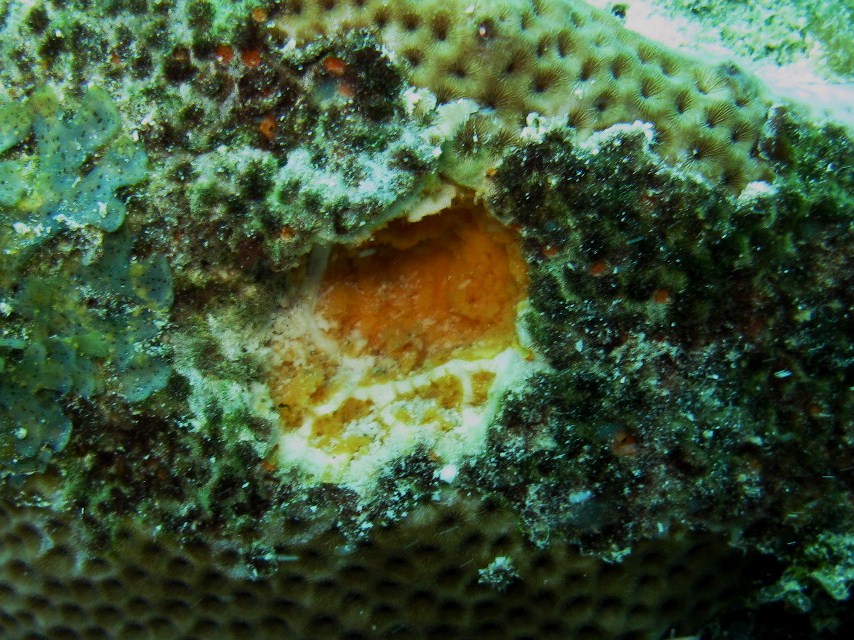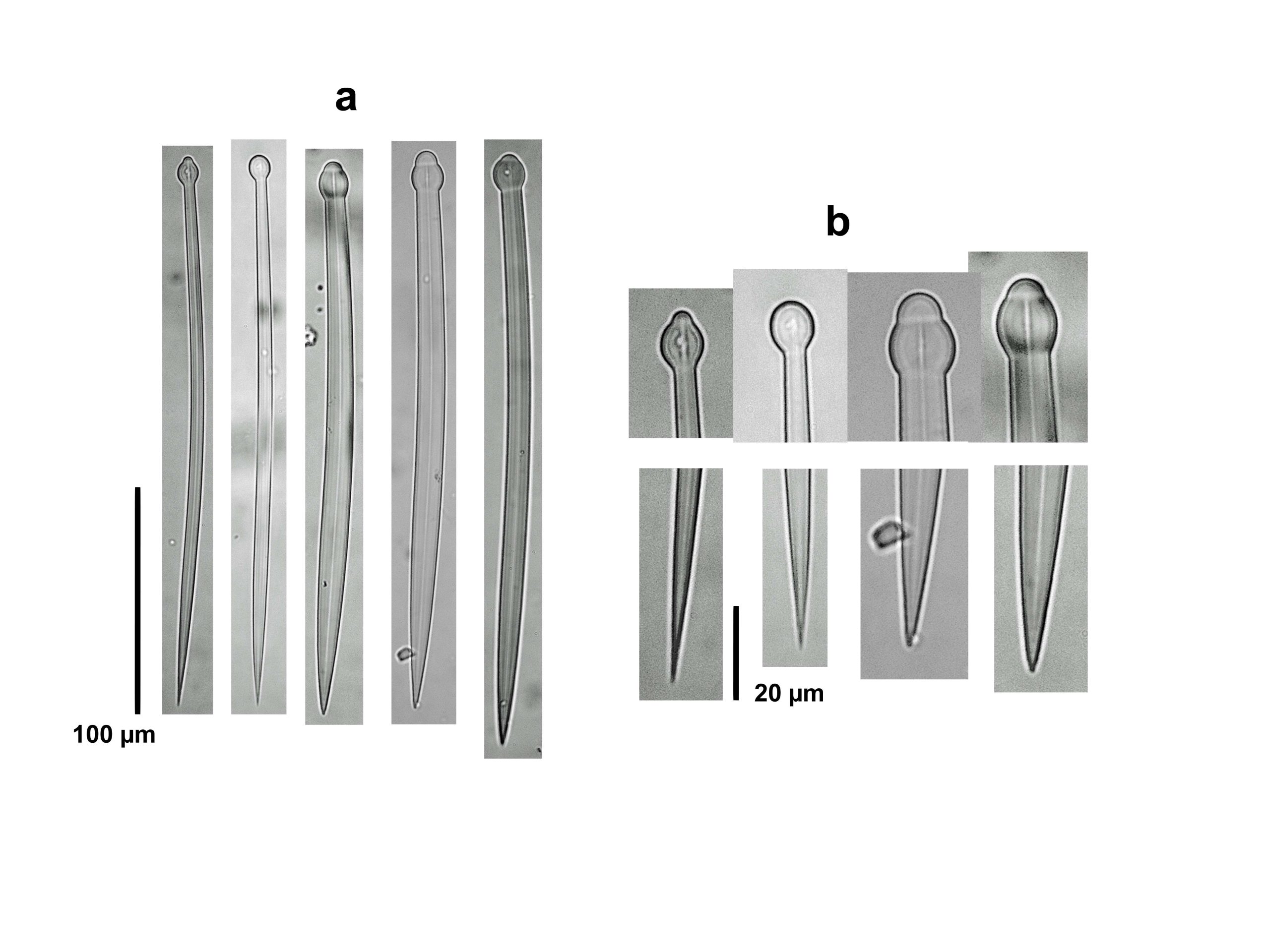Observed Characteristics:
Color:
- orange
Morphology:
- papillated
Consistency:
- soft
Sample Locations:
- Colombia
Cliona peponaca


Description: Excavating sponge of separated, low papillae of irregular outline which seem to be filling cavities of the substratum; inhalant papillae numerous, 1-2 mm in diameter; oscular papillae scarcer and larger than inhalant papillae, measuring up to about 3-4 mm, with a slightly elevated collar. Excavated galleries wide and deep, filled with tissue. Color pumpkin orange, both externally and internally. Consistency soft. Megasclere spicules are robust tylostyles with rounded heads, many of them subterminal, 210-270 µm long and 4.7-13.3 µm wide; heads are 6.3-15 µm wide and 10-15 µm long. No microscleres.
Notes: The pumpkin orange color and size of papillae, as well as the tylostyle spicules fit the original description of Pang (1973). Other orange excavating papillated sponges such as Cliothosa delitrix Pang, 1973, our Cliona aff. janitrix Topsent, 1932, C. vermifera Hancock, 1867 and Pione lampa fo. occulta Rützler, 1974, also pictured here, tend to be more bright orange in color, often towards scarlet. The former two species also lack microscleres, but the tylostyles of C. delitrix collected in the same area as our C. peponaca are slender, thinner and with less developed heads. The tylostyles of C. aff. janitrix are also robust but have abrupt stair-stepped ends and stylote and strongylote modifications. A specimen from the Bahamas named C. ?peponaca in the third edition of this guide was transferred to C. aff. janitrix after a more detailed analysis of spicules. In the field, C. peponaca can also be confused with the non-excavating but crevice-filling (when in reefs) Tedania ignis (Duchassaing & Michelotti, 1864), also pictured here.
Author Reference: Pang, 1973
Link: World Porifera Database

